Creative collaboration
The intention of the show was to be at the intersection of biographical theatre, food and design. Each element that makes up the show is seamlessly integrated with each other so as to be one experience. The intimate setting and its design forms an essential element in the experience and has been quite carefully put together, from the size of the audience, the single table, its setting, the size and design of all the steel ware that serves the taster’s menu along with the print and archival materials. And finally the narration supported by music that has been dug out of many archives and the light design that lends the performance its dramatic qualities.
– Virkein Dhar
What happens when four dynamic players from completely different backgrounds – a designer, performer-director, writer and chef – come together to create synergy in mutualism? There are untold creative ideas flying around the world today, but so few well realised. It is one thing to take the conceptual plunge, but another story altogether to materialise a sensory experience. Preserving vitality in a derivative and inspired work is proof of this team’s robust symbiosis. Sonalee Tomar investigates the mechanics and dynamics of curating an experience of a lifetime, that is both immersive and evanescent, generative and agile. Table Radica is a series of taste-performances.

Image by @roaminggoblin
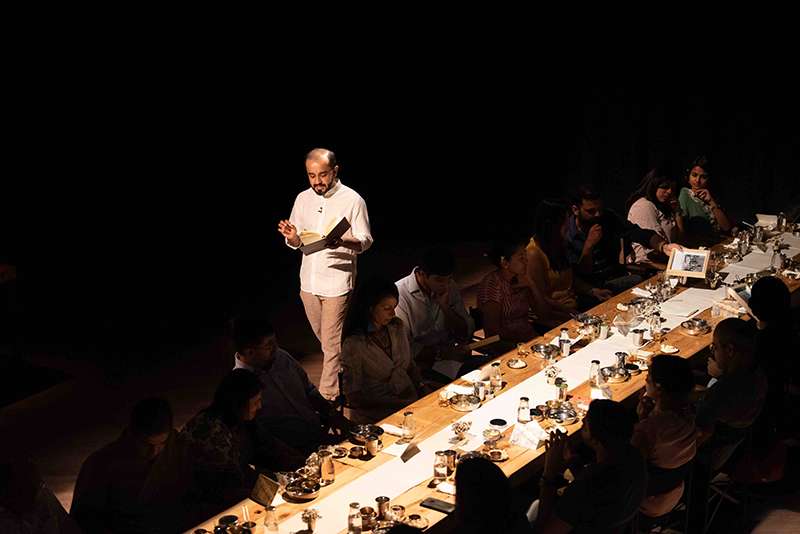
Image by @roaminggoblin
Who are the people behind Table Radica?
Amitesh Grover – Director & Performer
Sarah Mariam – Writer
Virkein Dhar – Founder, Poppy Seed Lab – Designer & Producer
Kaushik Ramaswamy – Bela Gulab Juhi Champa Chameli – Food curator & Chef
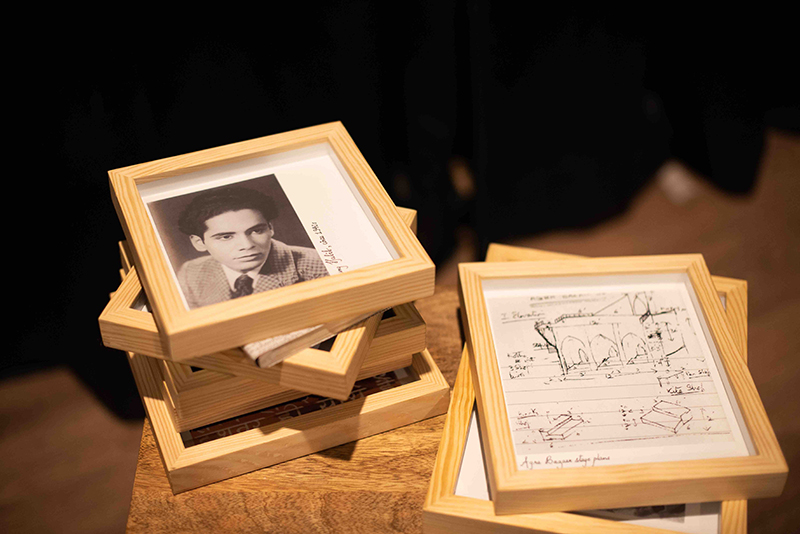
Image by @roaminggoblin
What was the idea behind Table Radica?
Amitesh Grover: A single curiosity drove the idea behind Table Radica – that of taste. Isn’t taste the most intriguing sense of all? Taste is not simply a corporeal experience – what’s on my tongue – but also an experience in aesthetics, in love, in desire, in life. Taste is formed ever so exquisitely, yet so very firmly. Taste is word, colour, form, scent. There is a reason why this latin phase is timeless – ‘De gustibus non est disputandum’ (There is no disputing about taste). Taste cannot be given evidence for, it can only be felt, and felt immediately, intensely. When we encounter memoirs, biographies, diaries of iconic figures, isn’t this what we are inevitably searching for; how they came to be what they became. How did they cultivate taste in books, in friendships, in ideas, how taste shaped their worldview? We wanted to share this expansive idea of taste, taste in poetry, morals, music, taste of determination, strife, and failure, but also the taste of a vision, of the kitchen, of eternity. When all these proposals cook together, is when the audience begins the tasting session at Table Radica. Table Radica is a series of taste-performances.
Virkein Dhar: Amitesh and I have known each other for a long time and I have been most fascinated by the stories he told me of stalwarts of Indian theatre that I have not had the good fortune of watching live. He also shared the rich archive that he has collected over a long period of time, and his personal experiences of their works. This was the starting point of the imagination of Table Radica where we wanted to make the archive come alive in an immersive performative experience. At the same time, I wanted to experiment with food within the theatre and how it could be used to enhance a theatrical experience at a fundamentally human scale. The curiosity to imagine what this could mean brought us to the idea of taste, and its various connotations in our lives.
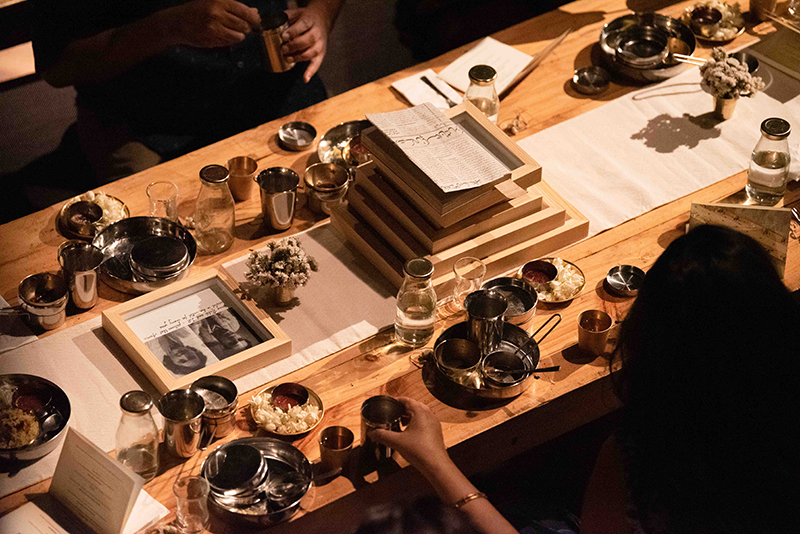
Image by @roaminggoblin

Image by @roaminggoblin
What were the various elements of Table Radica? And how did they all come together to provide a unique and experiential dining experience?
Amitesh Grover: There is a single long table, 25 guests who sit around, a taster’s menu, and a performed reading of a radical life. Ranging across historical archive, biography, and memoir, Table Radica presents the life, times and food of iconic personalities in theatre in India. All sorts of stimuli are brought to the table to touch, to taste, to see, to hold. Audience is invited to gather around the table, and become visitors, friends, connoisseurs, and witnesses to a radical life led in the world of theatre.
Virkein Dhar: The intention of the show was to be at the intersection of biographical theatre, food and design. Each element that makes up the show is seamlessly integrated with each other so as to be one experience. The intimate setting and its design forms an essential element in the experience and has been quite carefully put together, from the size of the audience, the single table, its setting, the size and design of all the steel ware that serves the taster’s menu along with the print and archival materials. And finally the narration supported by music that has been dug out of many archives and the light design that lends the performance its dramatic qualities.

Image by @roaminggoblin
Why was the journey and legacy of Habib Tanvir chosen for the first episode of Table Radica?
Amitesh Grover: Watching a Tanvir’s play was a watershed moment in my life. Back in 2000, Habib was invited to perform in our college with his internationally renowned play Charandas Chor. He arrived with a bus-full of actors, trunks, sets, stage properties, and musical instruments. Within minutes of its opening, Habib’s theatre captivated our minds, our souls. By the time the play ended, it became clear to me that there is nothing I wanted more than to pursue theatre and performance for the rest of my life, as passion, as profession, as a life-practice. The first episode of Table Radica is dedicated to the profound effect he had on me, his sense of taste for life had on me, and on countless others like me.
Sarah Mariam: Habib Tanvir’s life and works have been close to the hearts of several of us. When Amitesh approached me with the idea of writing for a format such as Table Radica, I too thought that the figure of somebody such as Habib would be ideal to initiate this series, because of the kind of geographical and cultural terrain he traversed across the span of his life. With humble beginnings in a small-town Muslim family with Pashto history, where motley traditional Muslim dishes were all that was known, to life in North India, to a long-standing exploration of the world and its food at large, as well as frugal meals that were just enough to fill the stomachs of his poverty-striken theatre group, Habib’s life offered us a fantastically moving range of taste not just in food, but also in sensibilities, aesthetics, desires, principles and politics. It was only befitting for Table Radica to commence with Habib, whose theatre and other predilections carry strong vestiges of tastes he formed along his journey.
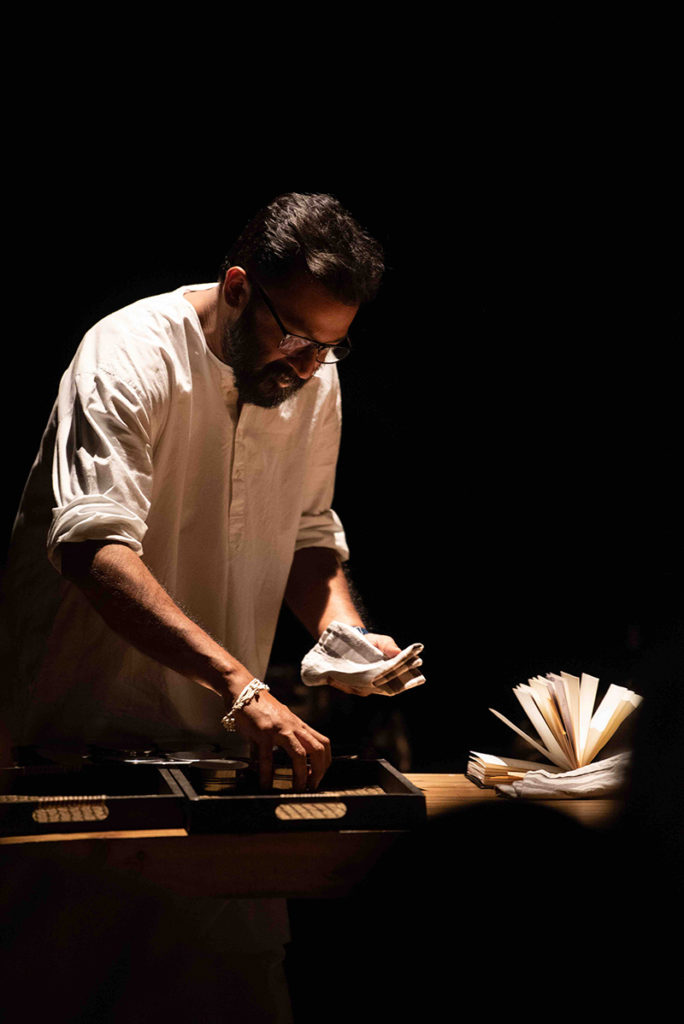
Image by @roaminggoblin
What about the food that was served at Table Radica — Who curated it? What was the thought behind the dishes? How many dishes or courses were served? Any particular cuisine or was it a mix of various cuisines? Name a few stand-out dishes from the evening.
Sarah Mariam: The dishes were an outcome of research located firmly in archival material and biographical and personal accounts. Each time Habib called to tongue a dish that he had tasted decades ago, I read an affective connection between that particular food item and a formative life experience from a phase of his life. Those dishes were woven into the narratorial fabric, and Kaushik turned the six course menu to more intrigue than food, subtly but radically transforming each dish.
Kaushik Ramaswamy: The food has been curated as an element that enhances the experience of listening to the story of a radical life. It forms itself as a basis for exploring the fundamentals of taste, in the way one lives and the choices one makes. Each dish is integrated into the text of the show so as to let the audience use their sense of taste to imagine and interpret their own life experiences through those of Habib. While the text is based on accurate facts, the food is a creative interpretation within that. There is no particular cuisine, it travels along with Habib from his childhood in Raipur, to his experiences of touring in Europe. There are six courses some with multiple dishes in them, served at precise moments in the show.
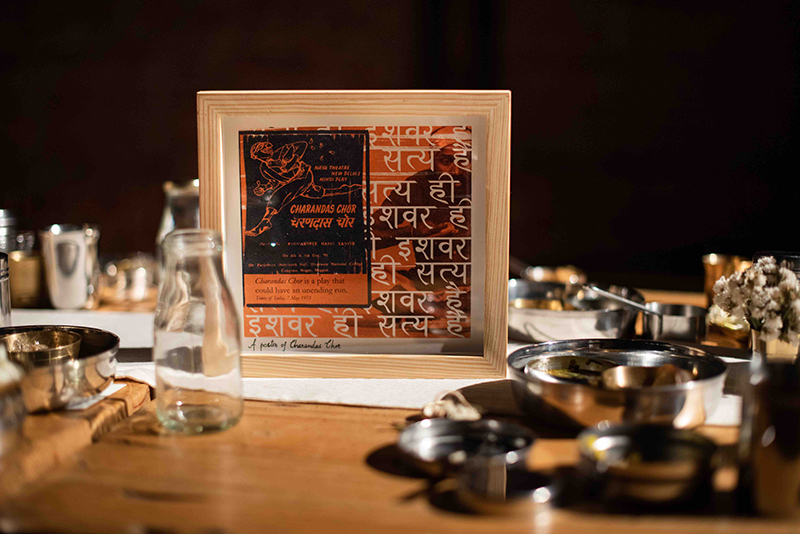
Image by @roaminggoblin
When can we expect the next episode of Table Radica?








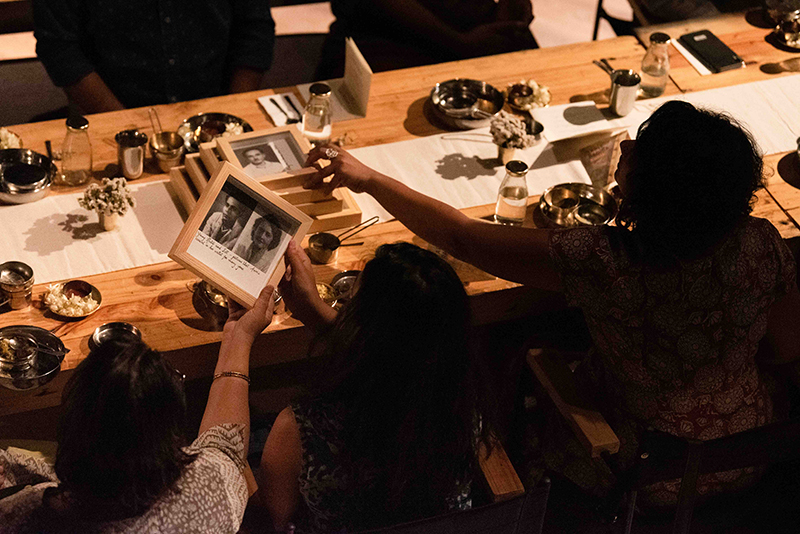



Add Comment